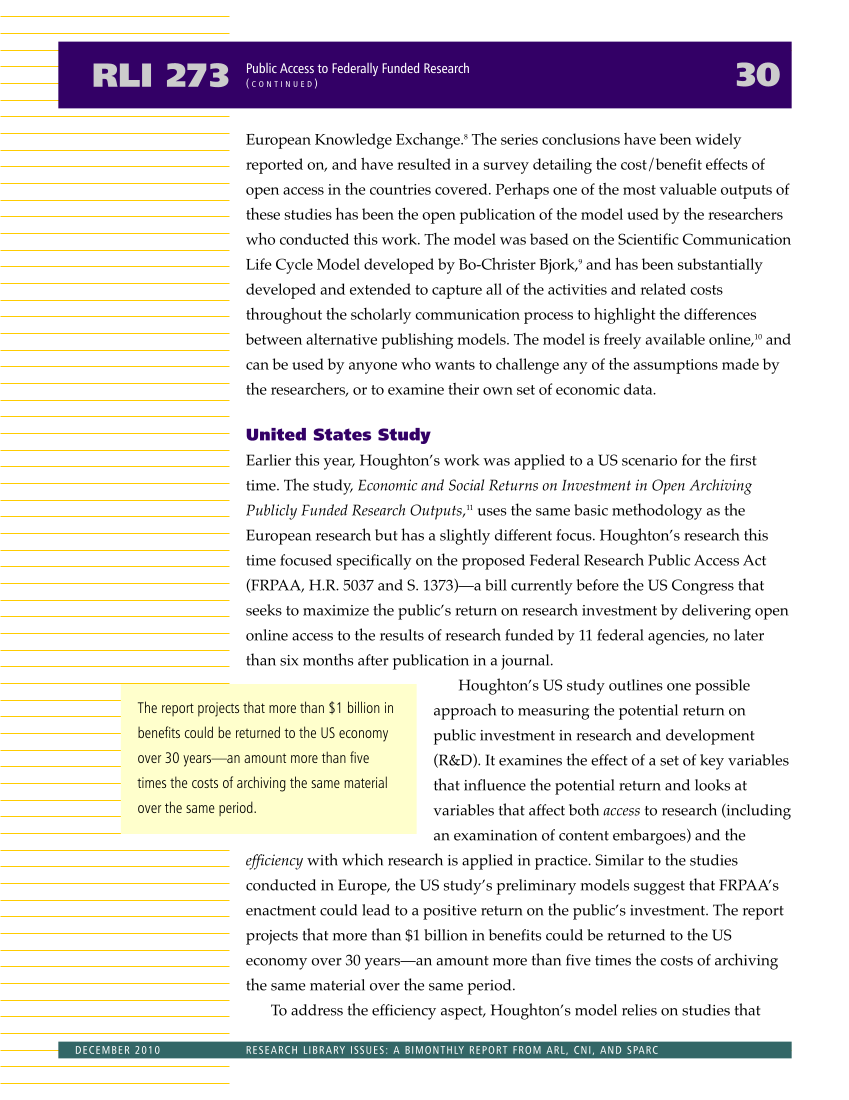European Knowledge Exchange.8 The series conclusions have been widely reported on, and have resulted in a survey detailing the cost/benefit effects of open access in the countries covered. Perhaps one of the most valuable outputs of these studies has been the open publication of the model used by the researchers who conducted this work. The model was based on the Scientific Communication Life Cycle Model developed by Bo-Christer Bjork,9 and has been substantially developed and extended to capture all of the activities and related costs throughout the scholarly communication process to highlight the differences between alternative publishing models. The model is freely available online,10 and can be used by anyone who wants to challenge any of the assumptions made by the researchers, or to examine their own set of economic data. United States Study Earlier this year, Houghton’s work was applied to a US scenario for the first time. The study, Economic and Social Returns on Investment in Open Archiving Publicly Funded Research Outputs,11 uses the same basic methodology as the European research but has a slightly different focus. Houghton’s research this time focused specifically on the proposed Federal Research Public Access Act (FRPAA, H.R. 5037 and S. 1373)—a bill currently before the US Congress that seeks to maximize the public’s return on research investment by delivering open online access to the results of research funded by 11 federal agencies, no later than six months after publication in a journal. Houghton’s US study outlines one possible approach to measuring the potential return on public investment in research and development (R&D). It examines the effect of a set of key variables that influence the potential return and looks at variables that affect both access to research (including an examination of content embargoes) and the efficiency with which research is applied in practice. Similar to the studies conducted in Europe, the US study’s preliminary models suggest that FRPAA’s enactment could lead to a positive return on the public’s investment. The report projects that more than $1 billion in benefits could be returned to the US economy over 30 years—an amount more than five times the costs of archiving the same material over the same period. To address the efficiency aspect, Houghton’s model relies on studies that RLI 273 30 Public Access to Federally Funded Research ( C O N T I N U E D ) DECEMBER 2010 RESEARCH LIBRARY ISSUES: A BIMONTHLY REPORT FROM ARL, CNI, AND SPARC The report projects that more than $1 billion in benefits could be returned to the US economy over 30 years—an amount more than five times the costs of archiving the same material over the same period.







































